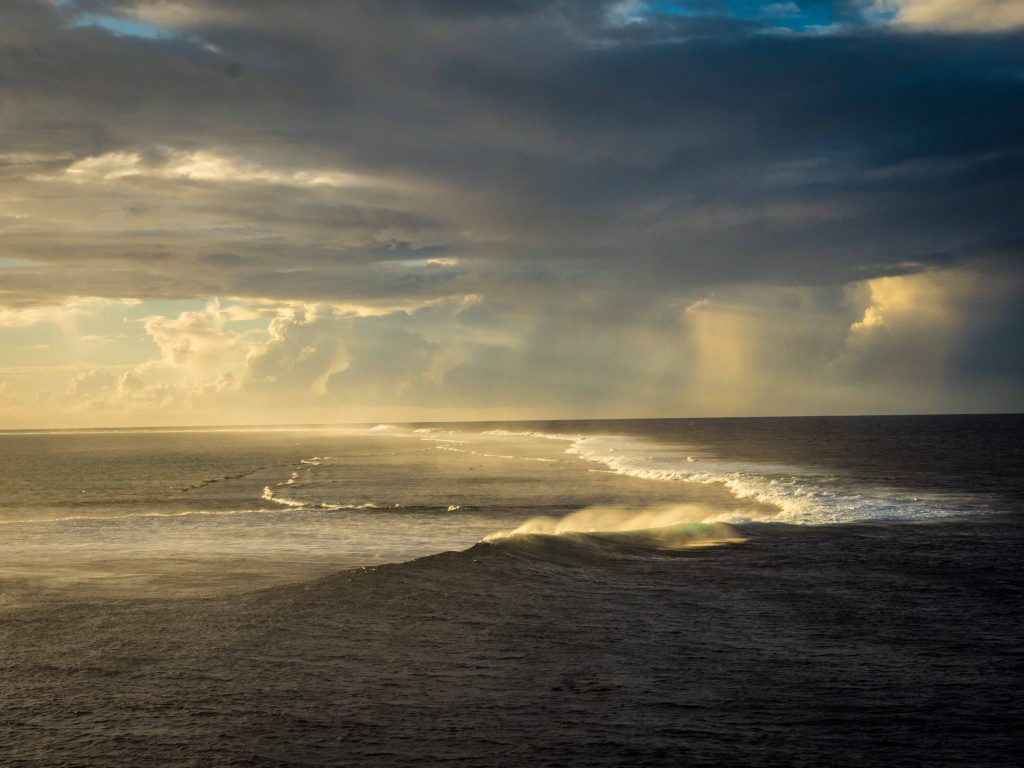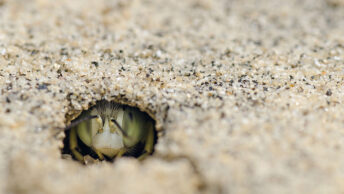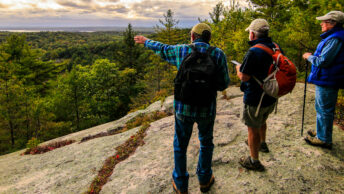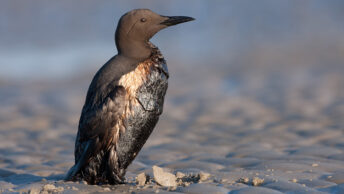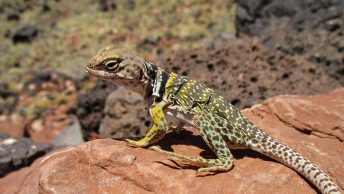Against this cosmic background the lifetime of a particular plant or animal appears not as a drama complete in itself but only as a brief interlude in a panorama of endless change
— Rachel Carson
*Inspired by Dr. Joe MacInnis, physician, author, and diver
Introduction
Earth’s human life-support system shows signs of failing. Human capacity to alter landscapes and the atmosphere is reaching catastrophic levels. Only the oceans seemed to be beyond control, but still it’s not beyond human influence. Limited experience in protecting nature’s integrity, health, and resilience in seascapes offers the potential to reverse sliding global environmental conditions by providing realistic expectations, offering moral fortitude, stimulating imagination, and proffering hope. The ocean’s capacity to evoke human awe and inspiration may be sufficient to focus mankind on the global existential threats we face. It is now vital to heed Rachael Carson’s 1937 prescient observation “Against this cosmic background the lifetime of a particular plant or animal appears not as a drama complete in itself but only as a brief interlude in a panorama of endless change.” The world will keep spinning, whether people are able to enjoy the ride or not.
At first we thought the ocean was too big to fail. Then as it began to fail, we worried it was too big to fix. Now we know it’s too big to ignore and that’s dangerous. Recent experiences in marine protected areas offer us hope of redemption.
Unless human behavior changes soon, Earth’s rocks, water, and life forms, i.e. ecosystems, likely will persist far beyond human existence. Most of the planet’s surface is covered by water, seemingly beyond human influence. People long thought oceans were so massive that human activities could have no global effects. Ancient Romans trapped one-ton tuna with mazes in the Mediterranean Sea, and medieval European sailors scooped gigantic,
human-size, codfish directly from the Atlantic in baskets. So dim are such stories in our collective memories, they seem mythical today. Yet the sea still piques curiosity and drives exploration into unknown realms. Recently, science has discovered that life in the sea produces most of the oxygen people breathe, that much of our food and agricultural fertilizers come from oceans, and that oceans moderate global climate. Oceans rightfully evoke wonder, awe, and inspiration, which people express in myriad art forms.
The first signs of trouble emerged, as Rachael Carson powerfully combined science and art to lyrically identify nature’s vulnerability to human impacts in The Sea Around Us (1951) and Silent Spring (1962). Today, we continue to warm, acidify, and contaminate Earth’s ocean waters, and to deplete sea life globally. Anthropogenic consumption of fossil fuels simultaneously warms the atmosphere and acidifies sea water. both of which now approach lethal limits for many life forms. Plastic, a 20th Century miracle discovery, has become pervasive in the ocean, and in humans who now each ingest 74,000 micro-plastic particles per year. Toxic chemicals invented by people with laudable intentions to improve human wellbeing have wreaked havoc in global food chains with DDT, et al., leading to collapse of wildlife populations. Reducing these compounds confirmed their impacts, and also offered hope and optimism when wildlife recovered.
People are still drawn to oceans. Popular coastal regions are battlegrounds for human survival. They are the places where people first feel impacts of catastrophic change in sea level, storms, toxic contamination and depleted seafood. Coasts are also where efforts to reverse past centuries of deteriorating environmental conditions that once fostered human civilizations will reap the first benefits of recovery. Decades of experience demonstrate that fish and wildlife in places that restore and protect nature’s integrity, health, and capacity for self-renewal, are more ecologically resilient and persistent than areas managed for fisheries and game take. Such protected areas improve environmental health, replenish depleted resources and insure against uncertainty as ecosystems metamorphose in response to global changes. Recent experiences with marine reserves also demonstrate that loss of productivity is reversible. Such protected areas possess the power to reverse sliding baselines with realistic expectations, moral fortitude, imagination, and hope. It is clear that national parks are more like movies revealing our possible futures than snapshots of our past.
OCEAN TOO BIG TO FAIL?
At first we thought the ocean was too big to fail. Then, as it began to fail, we worried it was too big to fix. Now we know it’s too big to ignore and that’s dangerous.
AWESOME OCEAN!
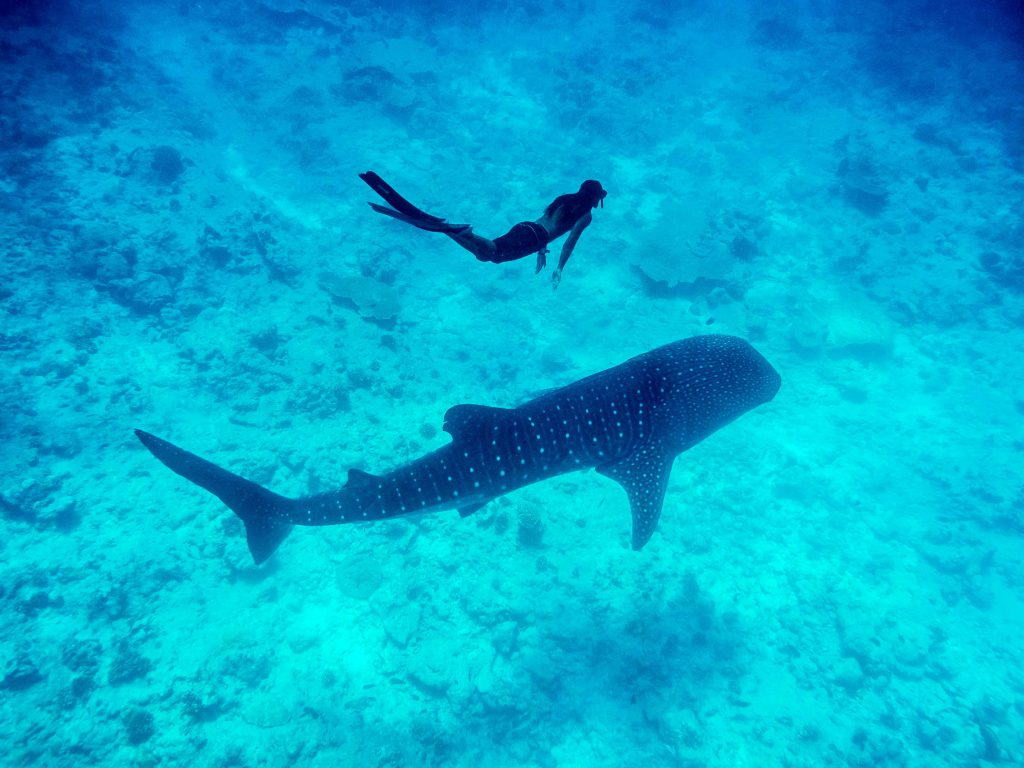
Personal encounters with ocean wildlife evoke wonder, awe, and inspiration, often expressed artistically to share and to influence others by example, as does professional dive guide Samma with a whale shark near Ari Atoll, Maldives.
EARTH HAS ONLY ONE ATMOSPHERE—IT CONNECTS US ALL
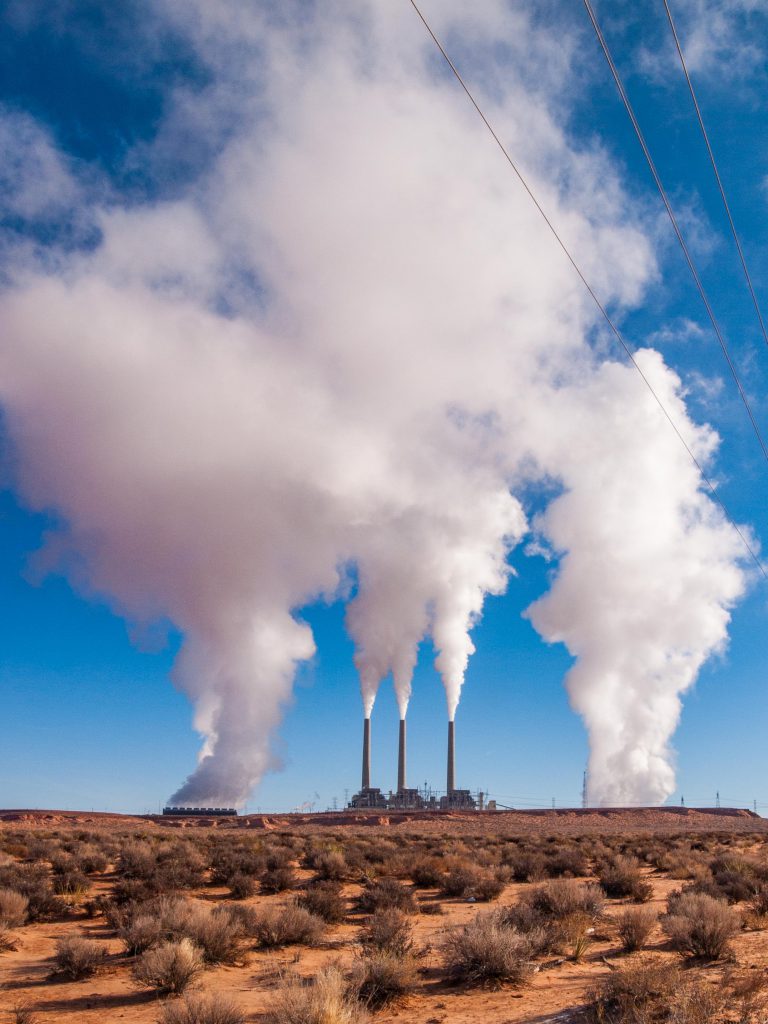
Generating energy to improve human lives, even in a remote desert like this where the Navajo Generating Station, near Page, Arizona, consumes about 8 million tons of coal each year, which inadvertently alters ocean chemistry and physics in the distant world ocean because there is only one global atmosphere; anthropogenic consumption of fossil fuels simultaneously warms the Earth’s atmosphere, acidifies ocean waters, and changes global climate.
OCEANS NOW THREATEN HUMANS ON COASTS LIKE NEVER BEFORE
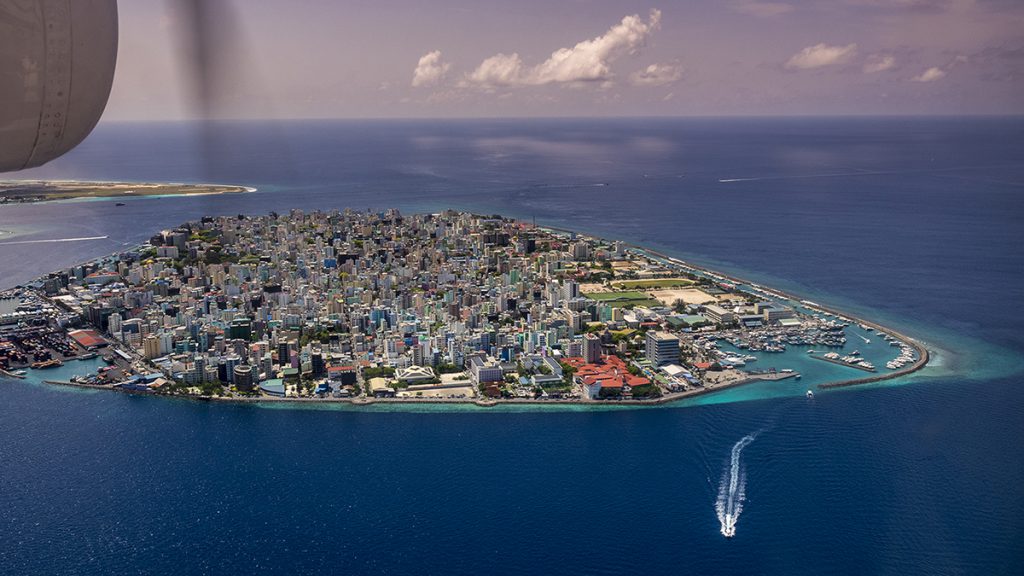
Every coast in the world is affected by rising sea level and increasingly acidic ocean water and none more critically than on North Malé Atoll, Maldives, where people face daily existential threats exacerbated by the increasing magnitude of seasonal tides and tropical storm surges.
UBIQUITOUS PLASTICS
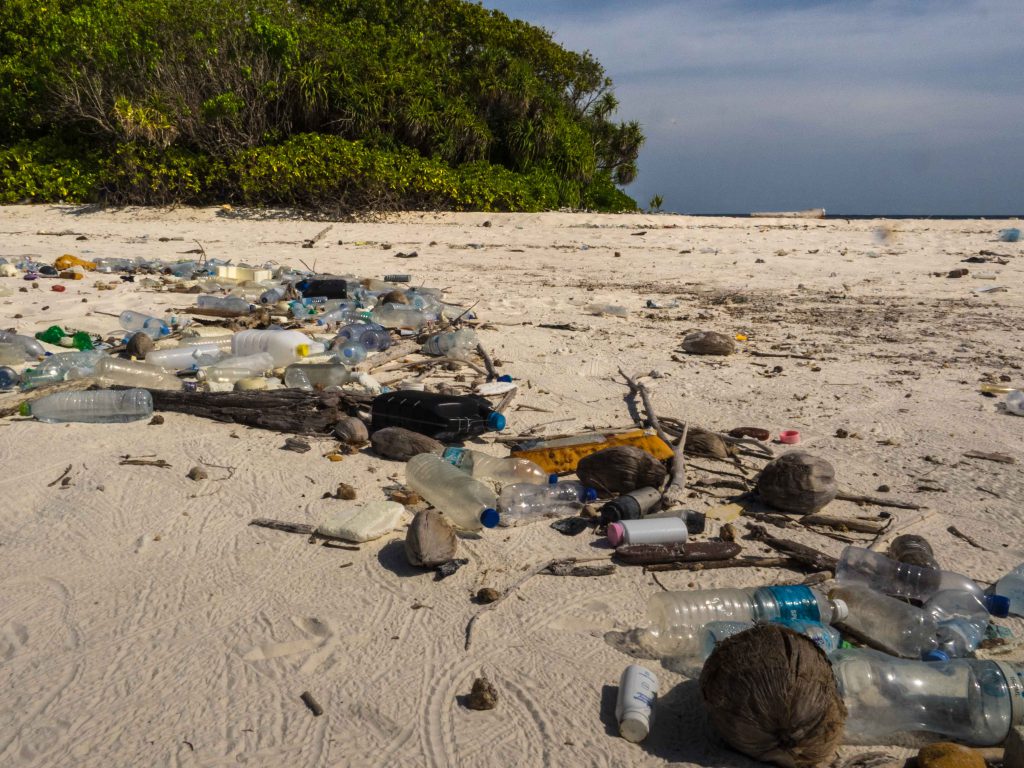
Plastic has become ubiquitous in the world ocean since its creation by chemists in 1907. It now rivals marine life for abundance in the sea. Plastic threatens marine food webs from top to bottom—ingested as micro-particles, it clogs particle-feeders’ filters at the base of food chains and reaches up to entangle, suffocate, and starve apex predator seabirds, turtles, and whales, filling stomachs with indigestible fragments. Plastic in nature is nearly non-destructible. Its debris reaches the most remote oceanic islands, as seen here on tiny, uninhabited Adhu Island, in Baa Atoll, Maldives, in the central Indian Ocean.
LIFE’S FIRST BITE: FOOD OR PLASTIC?
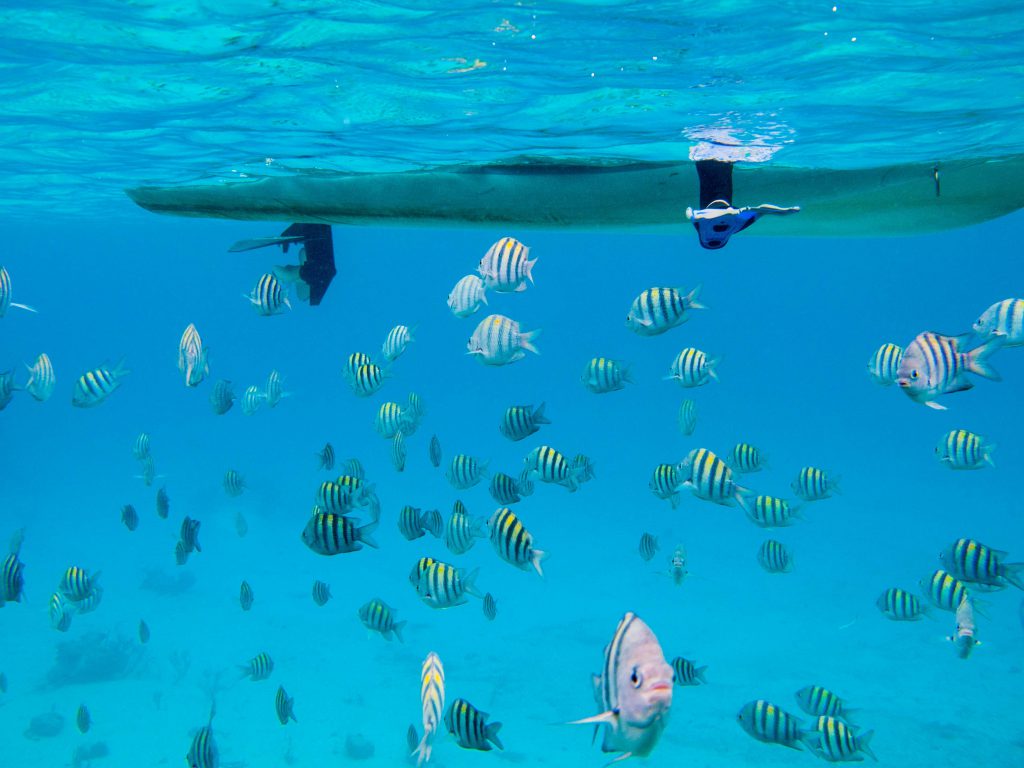
Life’s first bite may be the last bite, if the first one is plastic and not food for tiny animals that eat microscopic plankton. Current odds are nearly 50:50 that those first bites will be plastic micro-particles. If the odds don’t improve soon, schools of fish like these sergeant majors waiting to greet a snorkeler in Exuma Cays Land and Sea Park, Bahamas, will fade from memory, like one-ton tuna and 200-pound cod.
OCEAN RESILIENCE COULD AVERT DISASTER
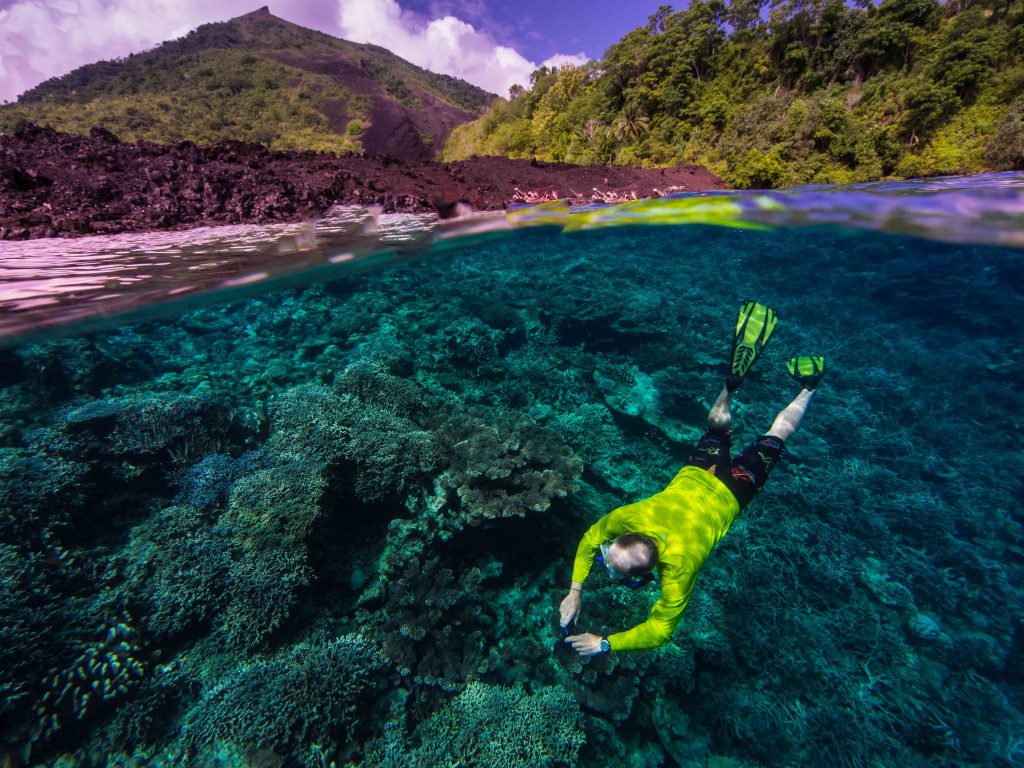
Ocean ecosystems can be incredibly resilient. With human action now, nature could save mankind. Marine ecological resilience in the face of natural disturbances gives hope for recovery from anthropogenic impacts, as witnessed by this coral reef that has completely overgrown a lava flow in 25 years, while adjacent tropical forests and island shoreline vegetation show little regeneration on Banda Neira, Moluccas, Indonesia (Spice Islands).
CLIMATE BATTLEGROUNDS
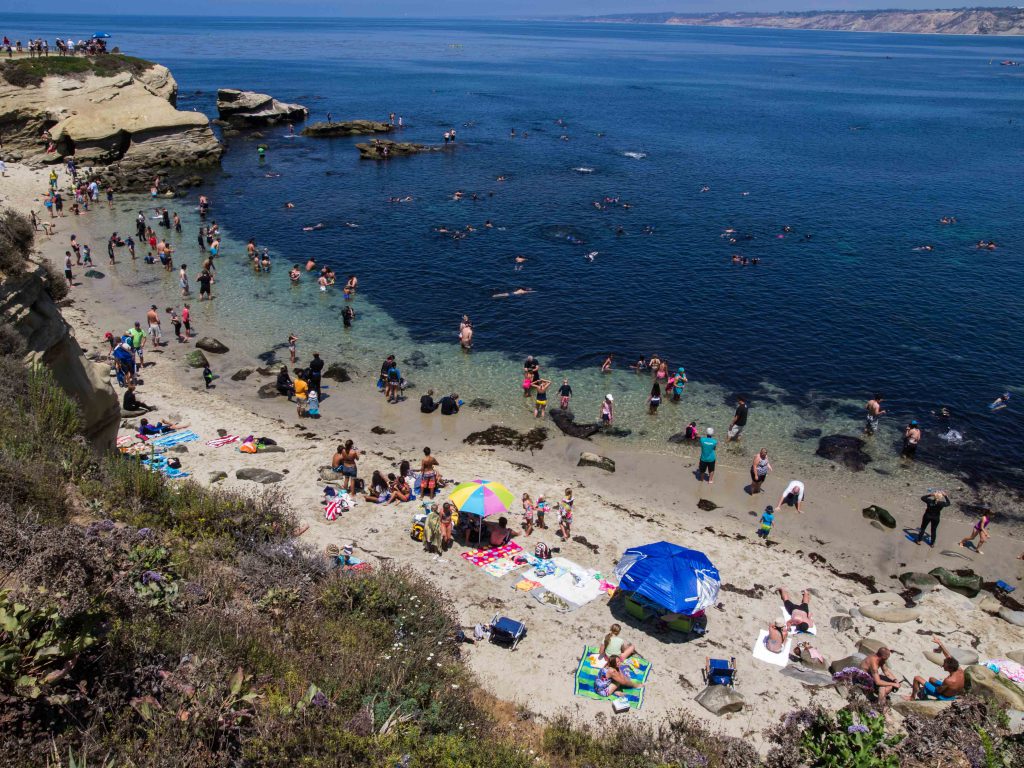
Acting together, in concert, people could resolve the climate crisis. Decades of experience in marine protected areas, like the San Diego-La Jolla Underwater Park in California, demonstrate that fish and wildlife in places that restore and protect nature’s integrity, health, and capacity for self-renewal, are more ecologically resilient and persistent than in areas managed for fisheries and game take.
IMPROVE THE WORLD—DANCE TOGETHER
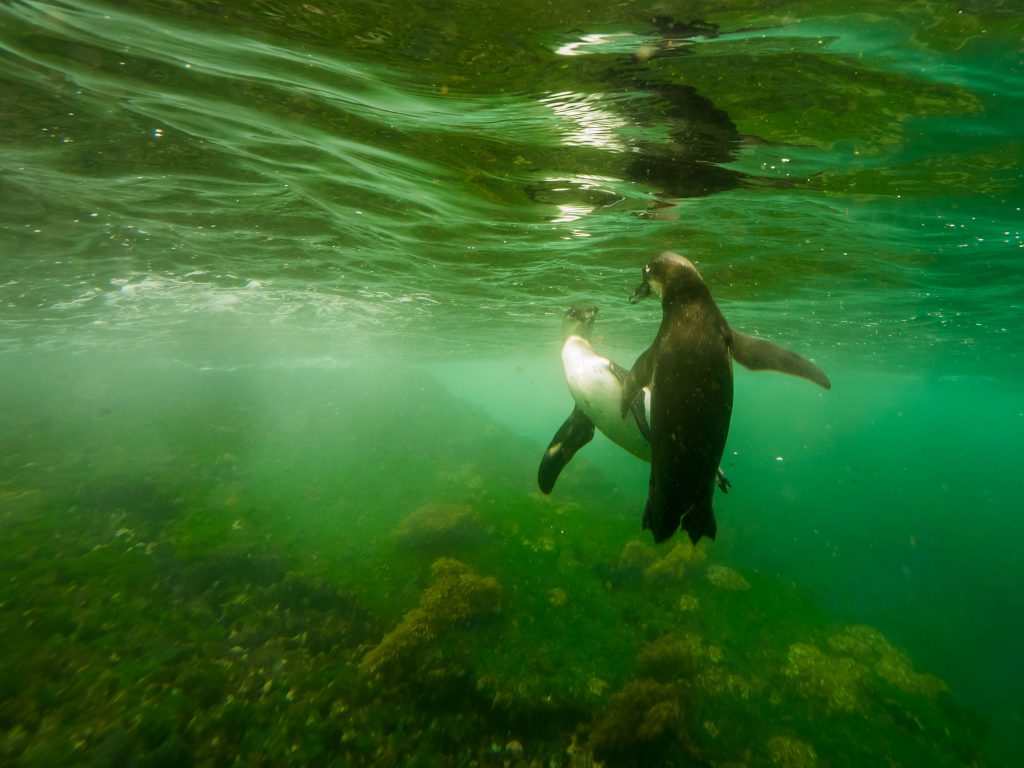
Will humans learn to dance together, like these endemic Galapagos penguins apparently engaging in a fleeting do-si-do, and change Earth’s future? What will happen? The outcome is truly up to us. Established marine national parks, like Ecuador’s Galapagos Islands, demonstrate how such areas can contribute to local economies and focus global support for conservation by engendering hope for international cooperation based on love and trust. We hope you’ll dance.
DANGER AHEAD
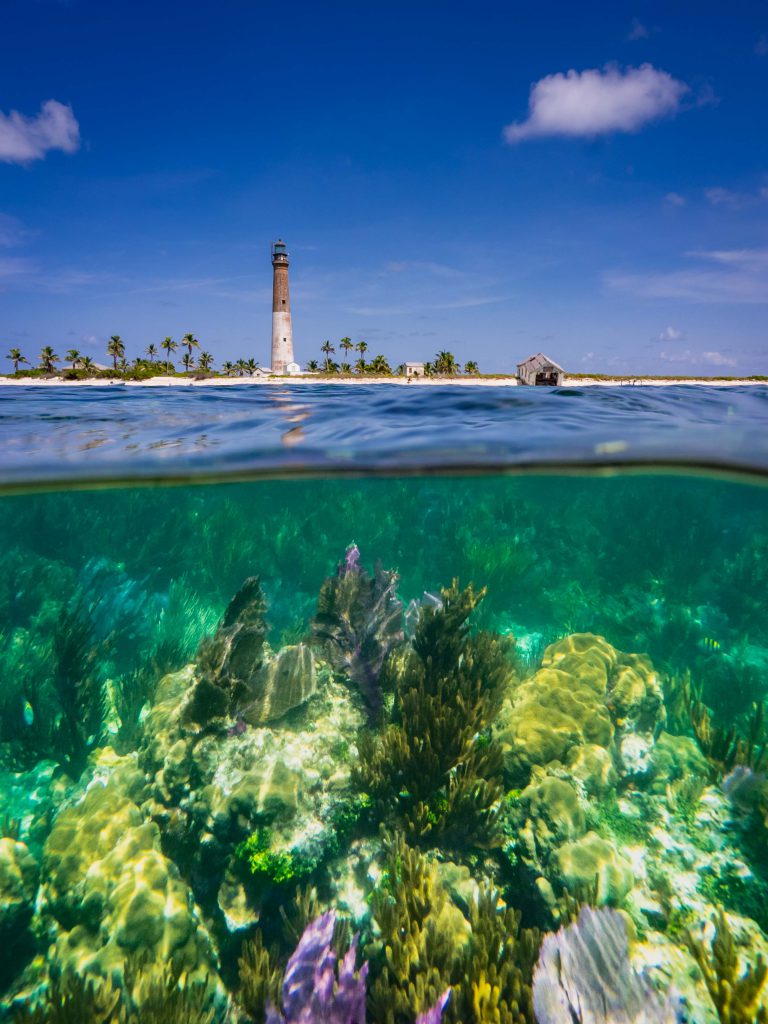
A lighthouse on the horizon is a clear warning of dangerous shoals ahead. With their power to reverse sliding baseline conditions with realistic expectations, moral fortitude, imagination, and hope, national parks like Dry Tortugas, Florida, warn us more like movies revealing our possible futures than snapshots of our past; will the warnings be heeded or ignored?



